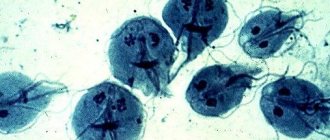The doctor prescribes an hCG test for the patient (?⚕️the abbreviation stands for “human chorionic gonadotropin”) in several cases. Is it needed to determine pregnancy and cancer pathologies in men and women? Having figured out what hCG means, the patient must understand why the doctor gave him a referral for this test.
What is hCG
Gonadotropin begins to be produced immediately after conception by the fertilized egg, and subsequently by the chorion (skeletal precursor) of the human embryo.
The maximum level in the blood fluid is reached by 7 weeks. The content in urine is lower. On the 6-7th day of absence of monthly bleeding, a woman can determine pregnancy using a hCG-sensitive test strip.
The structure of the hormone is represented by two subunits: alpha and beta. The former are similar to pituitary cells, the latter are determined by studying gonadotropin.
Depending on the level of hCG, one can judge the development of pregnancy and possible pathologies in the body of the expectant mother and fetus. The appearance of the hormone in the blood of women in the absence of pregnancy, as well as in men, indicates oncology of the genital organs.
Functions:
- preserves the corpus luteum;
- stimulates the production of estrogen and progesterone in the first weeks of a child’s life;
- improves the function of the adrenal glands and gonads of the embryo;
- prepares the immune system of the expectant mother for the growth and development of the baby, prevents rejection of the embryo;
- participates in the production of testosterone in a male child.
What does this analysis show?
Doctors warn that compared to rapid tests, the study of blood serum is a much more informative study. The concentration of hCG in the blood exceeds the concentration of the hormone in the blood by almost 2 times, due to which the determination of pregnancy will be accurate. Depending on the concentration of hCG in the blood of a pregnant woman, the doctor will also be able to guess the period when conception occurred.
You will have to donate blood for hCG not only in the first weeks of pregnancy, but throughout the entire period of waiting for the baby, since this analysis helps to identify pathologies and abnormalities in the development of the fetus. The first screening is usually carried out from 11 to 14 weeks of pregnancy. Also at this stage, the plasma protein PAPP-A is examined and an ultrasound examination of the fetus is performed, which makes it possible to determine chromosomal abnormalities.
A secondary study is carried out during the period from 16 to 20 weeks of gestation. Based on the data obtained, it is possible to assess the likelihood of genetic abnormalities in the baby and prescribe further studies. If the concentration of chorionic hormone is deviated from the norm, this may indicate serious problems, including a frozen or ectopic pregnancy, an increased likelihood of miscarriage, or pathologies in the development of the fetus.
Why is analysis done and when?
The content of hCG is determined by testing blood and urine, the analysis of which is carried out for a quick and accurate diagnosis of pregnancy. The chorion begins to produce gonadotropin on days 4-5 from the moment of fertilization, reaching a peak at 6-11 weeks, and then falls down. Repeated rotation occurs at 34-37 weeks.
After a delay in menstruation (approximately 6-7 days from the date of expected menstruation), the presence of pregnancy can be determined using a test. To do this, the strip is placed in the morning urine for 2-3 minutes (immediately after waking up, the hCG content is highest).
Modern home express diagnostics make it possible to establish conception before a delay, but only if fertilization has occurred for at least 12-13 days.
Blood tests are taken for total and free beta-hCG:
- General hCG is performed to confirm pregnancy in the first days of the expected menstrual cycle, in case of a false positive or false negative test. In the second trimester, it is used to diagnose abnormal development of the embryo, maternal diabetes, determine the presence and growth of atypical cells, hydatidiform mole, and choriocarcinoma. Having built a diagram of gonadotropin content, a gynecologist is able to predict an ectopic pregnancy, spontaneous miscarriage, or intrauterine death of a child.
- Free beta-hCG is determined during screening in the 1st and 2nd trimesters in order to detect Down syndrome and pathological conditions. Deviations from the norm place the expectant mother at risk, but do not give 100% reason to assume the presence of genetic abnormalities in the child. Blood fluid is donated at 7-14 and 16-21 weeks of pregnancy. Special monitoring of hCG levels is carried out when:
- pregnant woman over 35 years of age;
- a history of pathology of fetal health and development;
- hereditary genetic diseases of parents or predisposition to them.
The test is mandatory after an abortion, ectopic pregnancy, or miscarriage. These studies make it possible to determine the quality of curettage or surgery, determine the condition of the woman’s body, and help prevent possible complications.
If genital cancer is suspected, a test for the presence of hCG is prescribed for men.
Indications for prescribing a test for free b-hCG?
The study of biomaterial for free gonadotropin is prescribed as part of prenatal biochemical screening to identify markers of chromosomal pathologies of the unborn child. The optimal time frame for taking the test is considered to be from 10 to 13 weeks. Deciphering the results and calculating risks using a special computer program is carried out taking into account the PAPP-A values.
The analysis is also prescribed if, according to ultrasound data, chromosomal pathologies can be suspected in the unborn child. This, for example, may be evidenced by an increase in the thickness of the collar zone. A repeat test for free β-hCG is prescribed only if the program has identified increased risks of developing chromosomal pathologies in the fetus. For analysis, you need to donate blood from a vein on an empty stomach. If diagnostic rules are not followed or incorrect data is used to calculate risks, the results may be false positive. In this case, doctors will recommend a repeat test.
In situations not related to pregnancy, a test for free b-hCG is indicated in cases of suspected testicular tumors or trophoblastic pathologies (hydatidiform mole, chorionic carcinoma), as well as to monitor the effectiveness of treatment for such pathologies.
Rules for preparing for analysis
Preparation for analysis for human chorionic gonadotropin:
- diagnostics are carried out only in the morning;
- Blood fluid should be donated on an empty stomach;
- dinner should be no earlier than 8-10 hours before the procedure;
- before collecting biomaterial, the use of medications, especially those containing hormones, is limited;
- if it is impossible to refuse medications, the laboratory assistant is informed about the use of pills;
- 24 hours before the procedure you cannot have sex;
- For 4 days, fatty and spicy foods are not included in the daily diet; it is advisable to remove factory-made confectionery products.
How to perform an hCG test
The procedure for conducting a clinical diagnostic study of hCG content:
- Only venous blood fluid is used.
- Before starting the procedure, the pregnant woman needs some time to rest, calm down, and come to her senses.
- Having seated the patient at the table, the nurse feels the vein with her fingers and applies a tourniquet just above the site of the intended puncture. Asks the expectant mother to clench and unclench her fingers.
- The hand is clenched into a fist, the laboratory assistant inserts a needle into the vein, removes the tourniquet, and tells you to relax your fingers so that the biomaterial can flow freely into the container.
- After completing the blood sampling, the needle is removed and the puncture site is wiped with alcohol. The arm is bent at the elbow for 15 minutes to prevent bruising. In some laboratories, the alcohol swab is glued with a plaster, and the removal site is wrapped with a sterile bandage.
- The capsule with blood is labeled and sent to the laboratory.
- After 2-5 days, the result is given to the patient or the attending physician.
Table of hCG norms by day
Table of hCG norms during pregnancy by day, from the moment of conception:
| Day since fertilization | Minimum indicator | Average | Maximum indicator |
| 7 | 3 | 4 | 11 |
| 8 | 4 | 8 | 19 |
| 9 | 6 | 12 | 23 |
| 10 | 9 | 19 | 25 |
| 11 | 11 | 29 | 46 |
| 12 | 16 | 47 | 68 |
| 13 | 23 | 75 | 108 |
| 14 | 28 | 107 | 174 |
| 15 | 38 | 164 | 272 |
| 16 | 69 | 263 | 405 |
| 17 | 124 | 415 | 587 |
| 18 | 230 | 661 | 850 |
| 19 | 371 | 985 | 1400 |
| 20 | 530 | 1386 | 2020 |
| 21 | 785 | 1967 | 3200 |
| 22 | 1060 | 2690 | 4940 |
| 23 | 1420 | 3560 | 6230 |
| 24 | 1840 | 4660 | 7900 |
| 25 | 2440 | 6157 | 9832 |
| 26 | 4250 | 8170 | 15659 |
| 27 | 5430 | 10250 | 19560 |
| 28 | 7200 | 11400 | 28400 |
| 29 | 8880 | 13700 | 34000 |
| 30 | 10600 | 16700 | 40500 |
| 31 | 11600 | 19700 | 61050 |
| 32 | 12900 | 23600 | 64000 |
| 33 | 15000 | 25000 | 69000 |
| 34 | 15600 | 28100 | 70500 |
| 35 | 18000 | 32000 | 75000 |
| 36 | 20000 | 37000 | 79000 |
| 37 | 21700 | 39900 | 84000 |
| 38 | 23000 | 46500 | 88500 |
| 39 | 25000 | 58000 | 108000 |
| 40 | 26550 | 63500 | 116000 |
| 41 | 28000 | 65000 | 125000 |
Level by week of pregnancy
| Duration in weeks | Average units mIU/ml | Normal limits mIU/ml |
| 2 | 150 | 50-300 |
| 3-4 | 2000 | 1 500-5 000 |
| 4-5 | 20 000 | 10 000-30 000 |
| 5-6 | 50 000 | 20 000-100 000 |
| 6-7 | 100 000 | 50 000-200 000 |
| 7-8 | 80 000 | 40 000-200 000 |
| 8-9 | 70 000 | 35 000-150 000 |
| 9-10 | 65 000 | 32 000-130 000 |
| 10-11 | 60 000 | 30 000-120 000 |
| 11-12 | 55 000 | 27 000-110 000 |
| 13-14 | 50 000 | 25 000-100 000 |
| 15-16 | 40 000 | 20 000-70 000 |
| 17-20 | 30 000 | 15 000-55 000 |
Table of hCG indicators by week: table breakdown
HCG during pregnancy: norm by week - the table establishes the minimum and maximum values of the hormone content. Each laboratory determines its own specific parameters, slightly different from those accepted by WHO.
| Week of pregnancy | Indications |
| 1-2 | 24-155 |
| 2-3 | 103-4980 |
| 3-4 | 2650-83200 |
| 5-6 | 24050-152100 |
| 6-7 | 27400-234000 |
| 7-11 | 21900-289000 |
| 11-16 | 6250-112000 |
| 16-21 | 4830-80200 |
| 21-39 | 2800-79200 |
- For non-pregnant women, the normal hCG level in the blood is 0-5.
- The numbers for the amount of gonadotropin increase by 6-11 weeks, then gradually fall down.
- If there is a false negative test, the test must be repeated 2 weeks later, when the indicator reaches 25.
- During multiple pregnancies, hCG values increase exponentially, since each embryo produces a separate amount of the hormone.
- A difference in readings of up to 20% from the norm requires additional research, but does not diagnose genetic abnormalities of the child.
- The interpretation of the analysis is carried out only in the laboratory that performed the procedure. Each modern medical center has developed separate tables.
Pregnancy hormone detection
The first signs indicating conception appear 13–15 days after fertilization of the egg. If the monthly cycle is not disrupted, menstruation should begin at this time, but during pregnancy there is a delay. As medical practice shows, rapid tests often show a false result.
That is why, if there is a suspicion of an “interesting situation,” it is wiser to immediately go to the clinic and take the appropriate test. Many girls do not know what a blood test for pregnancy is called. In clinics and hospitals it is called a hCG test. The abbreviation hCG stands for human chorionic hormone.
This specific protein begins to be produced by chorion tissues after conception; its level begins to increase already 6–8 days after fertilization of the egg. Human chorionic hormone synthesizes the production of other biological components that help the body maintain pregnancy. It is by its quantity that pregnancy can be determined.
Protein chorionic hormone contains 2 components: beta and alpha. In the early stages of pregnancy, only the alpha component, which has a unique composition, is studied. In a non-pregnant woman, its level does not exceed 5 mU/ml. But if fertilization has occurred, its concentration will be increased, and it will increase every 2-3 days.
In Moscow, such a study is carried out in almost every clinic. How much transcription is done depends on the type of institution.
What does low hCG mean?
Low gonadotropin levels in an expectant mother may indicate:
1. In the first trimester:
- ectopic pregnancy;
The level of hCG during early pregnancy may not increase and remain low due to ectopic pregnancy
- genetic pathology of the fetus;
- frozen pregnancy;
- threat of stay, spontaneous abortion;
- intrauterine embryonic death.
2. In the later stages, it indicates a post-term pregnancy, requiring immediate stimulation of labor.
3. The lack of dynamics in the hCG analysis indicates hormonal problems in the mother’s body, the threat of miscarriage, and rejection of the embryo. Timely medication adjustment with drugs containing artificial “pregnancy hormone” is necessary.
If gonadotropin is low, an ultrasound is prescribed to confirm or refute the pathology.
Determination of hCG
The significance of hCG in the female body is of incredible importance. The increase in indications during the primary period of pregnancy is due to excess production of the hormone by the fertilized egg.
Due to chorionic gonadotropin, fetal development occurs, because it helps to launch all processes that ensure the normal course of pregnancy.
Using a blood test
- Approximately the tenth day after conception occurs, hCG is well detected in plasma.
- During the initial implantation of a fertilized egg into the endometrium, a pronounced increase in the hormone can be detected on the graph.
- The concentration of hCG can double every day, and the standards for this growth can be checked using a medical table.
- At 9 weeks after the last menstruation, peak hCG levels can be detected.
- In the future, this figure will begin to decrease; by week 20, human chorionic gonadotropin will drop by 2 times. After which stabilization of the hCG level in the blood plasma is noted.
A simple blood draw from a vein is enough to clarify the necessary information in the laboratory. With proper preparation, the result will be as accurate as possible.
Using a urine test
- The removal of hCG from the body during pregnancy occurs due to the functioning of the excretory system, that is, the kidneys. This means that there will be some hormone in the urine.
- Determining the concentration of human chorionic gonadotropin in the body using a urine test is possible approximately a couple of months after the end of menstruation. More precisely, it can be carried out earlier, but minimal volumes will be found that will only confirm pregnancy.
- At a later stage, shortly before labor, the peak of hCG in the urine can also be determined.
Once upon a time, this phenomenon was considered normal for doctors, but recently they have begun to adhere to the opinion that we are talking about the presence of a possible pathology.
For example, an elevated hCG level may indicate placental insufficiency, which occurs due to Rh conflict.
Using a pregnancy test
You cannot do without express tests; in gynecology, many diagnostic procedures are based on their results.
It is easy to find out about the level of hCG, but it is worth remembering that there is much less of it in the urine.
The readings may be lower by about half, which means that this diagnosis does not have high accuracy.
Sometimes, specialists resort to pregnancy tests, but additional studies are always prescribed to confirm the result.
What does high hCG level mean?
A high amount of hCG in the body warns of the possible presence of:
- oncology of the housing and communal services or the genitourinary system of the expectant mother;
- choriocarcinoma - an atypical neoplasm that develops from embryonic cells;
- hydatidiform mole - a pathological condition in which a fluid-filled bubble forms in place of the embryo;
- deviations in child development (Down syndrome, severe disorders of the heart and brain);
- multiple pregnancy;
- severe diseases of the endocrine system.
If the level is high, the expectant mother is immediately scheduled for repeated screening, an hCG chart is drawn up, and an unscheduled ultrasound is performed.
What affects the level of hCG in the blood?
The level of this hormone is influenced by a lot of internal and external factors. Try to donate blood in the same laboratory at all times, as data between laboratories may differ significantly.
Factors influencing the level of hCG in the blood:
- Pregnancy with twins or triplets
- Ectopic pregnancy
- Presence of diseases and malformations of the child
- Early toxicosis
- Diabetes
- Frozen pregnancy
- Incorrect gestational age
- Taking hormonal medications
- Donating blood after meals
What affects the level of hCG in the blood?
Changes in hCG levels during normal pregnancy
The readings change several times while waiting for the baby. During the normal course of pregnancy, the hormone content increases sharply from the 4th, 5th week, preventing spontaneous miscarriage and rejection of the fetus by the mother’s body.
At 12-13 weeks, gonadotropin levels begin to fall. At this time, the main task of hCG is to maintain pregnancy and help in the formation of the vital systems of a small person.
In the third trimester, the glycoprotein mainly remains at the same level, making a slight turn at 34-37 weeks, preparing the woman’s body for the upcoming birth.
During multiple pregnancy, the amount of gonadotropin is initially very high and continues to increase exponentially in the first trimester. This happens because each embryo produces its own “pregnancy hormone.”
What are the deviations from the norm during pregnancy?
HCG during pregnancy in case of deviations from the norms for the weeks indicated in the table is an unfavorable sign, indicating the possible presence of pathologies in the body of the expectant mother or child.
A larger difference in gonadotropin readings is typical for multiple pregnancies, but also occurs with:
- severe toxicosis;
- abnormalities of fetal development;
- severe diseases of a woman, such as gestosis;
- post-term pregnancy;
- diabetes mellitus, diseases of the endocrine system;
- taking histogenic drugs.
If high numbers are detected during the triple test, the pregnant woman is identified as a risk group and additional examination and ultrasound diagnostics are prescribed.
A downward change in hCG numbers most often indicates a difference in the actual and obstetric stages of pregnancy.
A sharp decrease in the amount (more than 50%) indicates the threat of miscarriage, intrauterine death of the embryo, ectopic pregnancy, or severe placental insufficiency.
There may be cases of receiving false negative and false positive tests. Currently, this medical error occurs in approximately 78% of cases of all certain pathologies.
False positive – high levels of the hormone in a non-pregnant woman. Occurs with oncology, taking oral contraceptives, drugs for the treatment of infertility, as a consequence of abortion, hydatidiform pregnancy, or the individual characteristics of the patient.
In such a situation, you need to wait 2-4 days, giving the body time to return to normal. Repeat the study, get examined.
False negative - (low result) is associated with a discrepancy in the timing of pregnancy. Most often it occurs with an irregular menstrual cycle, late ovulation, ectopic pregnancy, or changes in hormonal levels. Such a discrepancy is a dangerous factor that requires urgent re-analysis and ultrasound examination to exclude attachment of the fertilized egg to the fallopian tube.
Deviations during early pregnancy
The difference in the level of gonadotropin in relation to established standards at the beginning of a baby’s life is a dangerous factor. In the first trimester, the growth of the hormone is aimed at maintaining pregnancy, preparing the mother’s body to accept and develop the embryo.
A low amount of hCG may indicate:
- pathologies of embryo development;
- threat of spontaneous abortion;
- intrauterine death of a child;
- discrepancy between the timing of the actual and expected pregnancy;
- beginning gestosis;
- maternal endocrine system disease;
- chronic placental insufficiency;
The absence of dynamics of change is a sign of ectopic pathology.
During a frozen pregnancy
HCG during pregnancy, norm by week, table for intrauterine fetal death is characterized by a gradual decrease. The embryo suddenly stops growing, developing, and gradually dies in the woman’s body. The anomaly occurs when there are no signs of spontaneous abortion and the baby is in the uterus.
There may be cases where a non-developing pregnancy was characterized by the presence of an empty fertilized egg. Most often it occurs in the 1st trimester, but cases of baby death for unknown reasons are possible at 31-32 weeks of pregnancy. The chorion of a dead embryo stops producing gonadotropin, the amount of which in the woman’s blood fluid gradually decreases.
If a deviation from the numbers to a lesser extent is detected, the expectant mother is prescribed a repeat test after 48 hours. The specified time required for the complete cessation of hCG production. Based on the research results, the doctor builds a diagnostic picture of the gonadotropin level.
Having assumed a frozen pregnancy, the woman is sent for urgent ultrasound diagnostics. When confirmed, curettage is performed. At a later date, labor is stimulated and hormonal therapy is administered.
During an ectopic pregnancy
HCG during pregnancy (norm by week, table of indications) for the development of a fertilized egg attached outside the uterine cavity remains at the same level or gradually falls down.
An ectopic (tubal) pregnancy is an abnormal condition in which a human embryo develops in the uterine (fallopian) tube. Options are possible when the embryo tries to grow in the intestines, near the ovaries, or in other cavities. Tubal symptoms are similar to those of normal pregnancy.
In the first weeks, the amount of gonadotropin increases, but reaches only the minimum normal value in the table. When performing a home pregnancy test, the second strip may have a less pronounced color.
If a lack of glycoprotein is detected in the growth, it is necessary to repeat the analysis within 24 hours. For an urgent hCG chart, examine the woman in a chair and do a control ultrasound.
Having diagnosed an ectopic pregnancy, surgical removal of the embryo along with the fallopian tube is urgently carried out. Otherwise, as the fetus grows, the attachment site will rupture, which can lead to the death of the woman from severe pain and heavy bleeding.
Which laboratories do the analysis with decoding.
It happens that a girl received the hCG result in her hands, but will only see the doctor in a few days. All days she will be tormented by doubts about what the analysis indicator means. To keep your nerves in place, I recommend getting tested in independent laboratories. Some of them print the analysis norm according to the stage of pregnancy on the results.
Sinevo Laboratory will do everything in the best possible way. The form with the analysis result contains a column with norms depending on the week of pregnancy. So you don’t have to wonder what the test should be during your week of pregnancy. The laboratory will notify you when the analysis is ready, which greatly simplifies the waiting time for the result. Dila works on the same principle.
HCG level indicators for twins
Exceeding normal values by 2 times occurs when two babies appear under the heart. The numbers from the first gonadotropin analysis may not deviate from the norm or be slightly higher. In subsequent tests, the values double.
This occurs as a result of the production of the hormone by several chorions. Having suspected a multiple pregnancy, the gynecologist prescribes several repeated hCG tests with a difference of 3 days.
If, when constructing a diagram, it is clearly visible that the figures in the table are several times higher, then with a 100% guarantee we can say that there are twins.
HCG as a marker of fetal abnormalities
HCG during pregnancy (norm by week, table of values) is considered to diagnose fetal abnormalities together with other markers.
When determining developmental defects, 2 screenings are carried out:
- At 10-14 weeks, hCG and PAPP-A (plasma protein A) are examined.
- At 16-18 weeks, a triple test is performed: AFP (alpha-fetoprotein), Extrol-A, hCG.
Based on the meaning of the markers, it is assumed that the child has:
- Down syndrome (hCG is exceeded by more than 2 times in a singleton pregnancy, low values of other indicators);
- Patau syndrome, Edwards syndrome (reduced numbers in all studies);
- Turner syndrome (hCG is normal, the rest is underestimated);
- defects in the development of the cardiac and nervous systems.
Having received the test results, the gynecologist takes into account the age and health status of the expectant mother, the development of the fetus, and the compliance of ultrasound data with normal indicators. A pregnant woman is identified as a risk group, subjected to an unscheduled examination, and sent for a consultation with a geneticist.
With compelling reasons and 100% confidence in the child’s chromosomal pathologies, the woman is advised to have an abortion.
Screening for twins does not make it possible to determine abnormal defects for each child, since the hormone values are initially doubled.
If hCG remains at the same level, the woman is prescribed blood and urine tests to build a diagram and exclude:
- frozen and ectopic pregnancies;
- pathologies of child development;
- lack of growth and development of the embryo;
- risk of spontaneous miscarriage.
How long to wait for the result
Having donated blood, the patient wonders how long to wait for the result from the laboratory. The answer, depending on the urgency, comes after 2-24 hours. HCG tests, which have already been deciphered, are sent to the attending physician in the form of test results.
If a pregnant woman is at risk, then on the referral the specialist makes a note “cito!”, which allows the laboratory staff to understand that an answer is needed as quickly as possible.
The results of hCG and the response of specialists depend on the workload and work schedule of the organization conducting the research.
Reasons for the discrepancy between the pregnancy dates established by doctors and the conclusions of the hCG analysis
Chorionic glycoprotein is produced from the moment of attachment of the fertilized egg and shows the exact age of the embryo. Obstetricians-gynecologists calculate the gestational age from the first day of menstruation preceding conception. Ovulation occurs 10-14 days from the beginning of the cycle. As a result, the gestational age differs from the true age of the baby by 2 weeks.
There are options in which fertilization occurs at the end of the cycle (sperm can survive in a woman’s body for up to 5 days). After the first hCG study, a gynecological examination on a chair, and an ultrasound, a double pregnancy period is set with a difference of 14 days.
The basis is the preliminary calculation of the obstetrician-gynecologist and the results of the examination. With irregular periods, the difference in weeks may exceed the norm, and the hCG numbers may be significantly lower than the period expected by the doctor.
Human chorionic gonadotropin is produced to maintain pregnancy and prepare the mother’s body for the process of growth and development of the embryo. The correlation between the hCG level chart during pregnancy and the weekly norms given in the WHO table is the most important task of the obstetrician-gynecologist.
The slightest deviations will allow you to notice in time and, if possible, prevent pathologies in the health of the mother and the unborn baby.
Article design: Vladimir the Great
When can you donate blood for hCG?
If a woman knows approximately when conception occurred, she can visit the laboratory and donate blood for pregnancy within 6–8 days. If the expectant mother does not know when conception occurred, an analysis can be done within a week after the delay. A blood test for hCG is as accurate as possible and cannot give a false result.
This is due to the fact that after the embryonic egg attaches to the wall of the uterus, the level of chorionic hormone increases every 2 days. If conception has occurred, the hCG level is guaranteed to show it. Moreover, unlike other studies, hCG analysis helps to determine the age of the fetus not only in weeks, but also in days.
Blood is drawn only from a vein. The procedure takes only a few seconds and is completely safe. In order to assess the health of the mother and fetus, as well as set the most accurate due date, a woman will have to undergo other tests, including a biochemical analysis and a general blood test during pregnancy.











